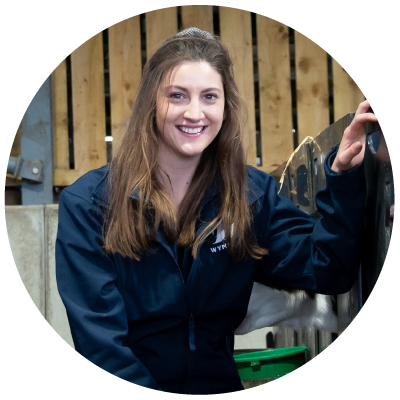Table: Target Body Condition for Ewes at key times of reproductive cycle
| Tupping | Scanning | Lambing | |
| Lowland | 3.5 | 3.5 | 3 |
| Upland | 3 | 3 | 2.5 |
| Hill | 2.5 | 2.5 | 2 |
There are a number of implications of under/over conditoned ewes:
Birthweight and survival
Birthweight is often used as a predictor of lamb survival, with lighter lambs often having lower survival rates. 70% of lamb mortalities occur within the first 48 hours of birth.
Under-conditioned ewes often produce lambs born at lighter birthweights. These lambs have lower glucose levels and reduce brown fat stores, essential for heat production, and are slower to get up and suckle less frequently. Consuming colostrum quickly is essential to lamb survival and future performance. Trying to correct BCS during the last few weeks will be too late, with overfeeding of thin ewes in late pregnancy leading to larger lambs due to more nutrient partitioning to the foetus, due to the increased intakes.
Over-conditioned ewes often mobilise their own body reserves. There is greater risk of experiencing lambing difficulties and increased lamb mortality as they often produce larger lambs.
Mammary Development
Most mammary development occurs in late gestation. Under-conditioned ewes often have poorer quality and lower quantity of colostrum. Poor condition can affect hormone balances, so progesterone levels do not drop as rapidly, delaying the onset of lactation. Often viscosity is also affected meaning lambs cannot consume so easily or quickly.
Mothering Ability
Under-conditioned ewes are likely to have poorer mothering abilities and are often more aggressive towards the newborns. This is due to lower levels of oxytocin being produced. Similarly, over-conditioned ewes that experience birthing trauma, i.e prolapse or dystocia, are often slower to lick and bond with their lamb and increased risk of rejecting the lamb.
Ensuring that ewes are at the optimum BCS for lambing can have a significant influence on lamb birthweight and survival, as well as the ewe mothering ability, milk production; this will help produce a high-quality lamb.
TIP:
It takes around eight weeks to gain one BCS score, so regular monitoring can help reduce reproductive and performance impacts. Identifying poorer ewes early on allows them to be separated and adjustment of feeding and management more effectively, e.g. thin singles feeding with twin-bearing ewes.












